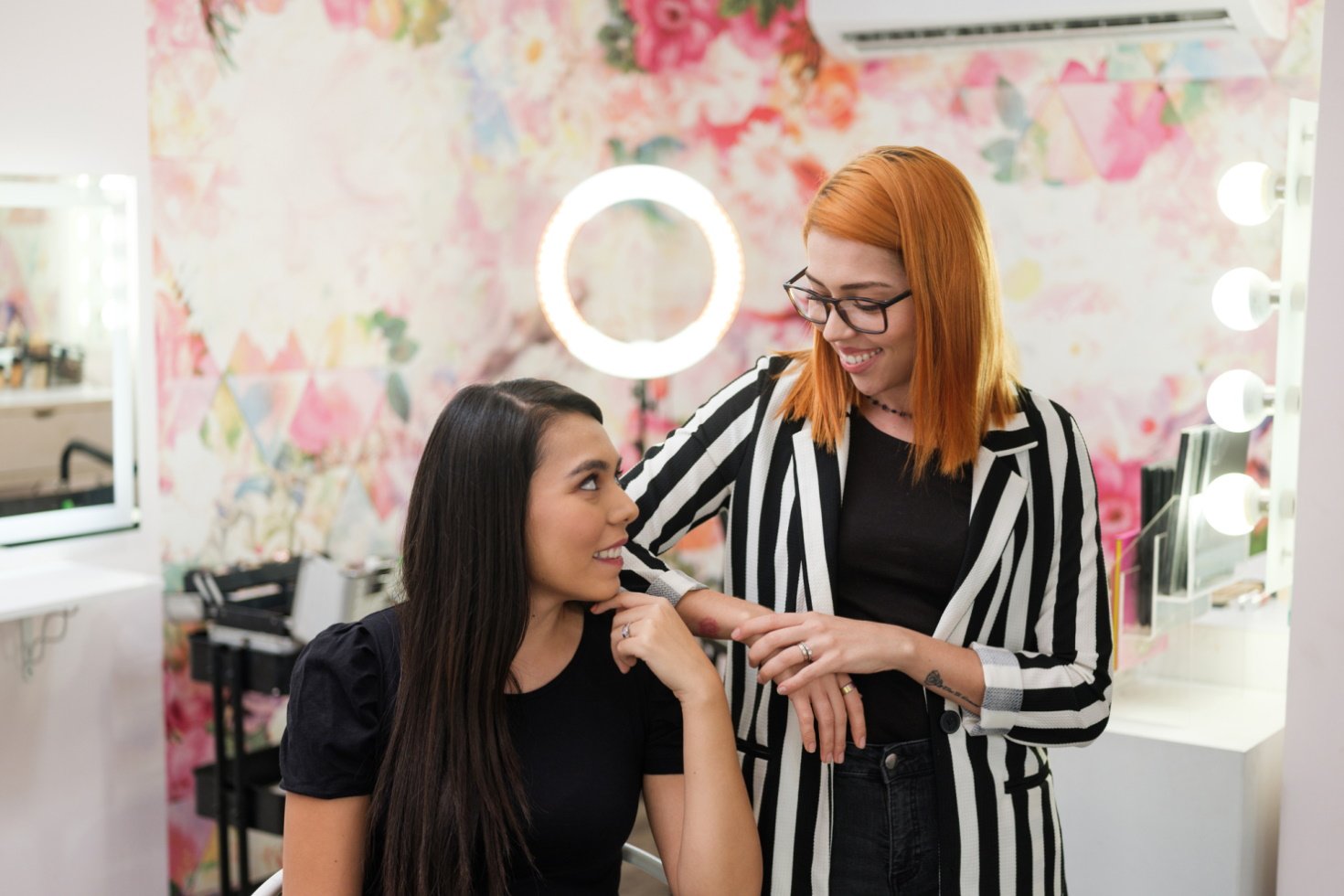Blog • Best Practice
4 Questions to Ask Yourself Before Collaborating with Another Beauty Brand

By Shanalie Wijesinghe . Sep.21.2022
Share Article
Collaborations can fuel rapid growth — as long as you do your homework
It’s ironic that an industry dedicated to making people beautiful can feel like a battlefield. As pleasant as it may be for a customer to visit a salon, behind the scenes the business is often engaged in fierce competition with other brands to keep that client coming back.
But winning in the beauty world isn’t always about waging war. In fact, collaboration can be an even more effective path to success — the trick is finding the right partner. A good collaboration isn’t just about personality or opportunity, though; you need to be smart about what a partner will bring to your table. Here are four questions to ask yourself before making any kind of commitment.
Is what they offer complementary?
Before getting into the difficult legwork outlined in the following sections, you’ll want to narrow your options by thinking through how your offerings compare. First, while there will certainly be overlap, you’ll want to ensure there’s as little redundancy as possible. Secondly, you’ll want to maximize the degree to which your businesses fill each other's gaps: Joining forces with a brand should significantly enhance what you can offer, including products, services, and locations.
If you’re fortunate, the collaboration is more than a one plus one equals situation. The best beauty brand partnerships result in a combined offering that’s more valuable than the sum of its parts. In these collaborations, the customer feels like they're getting access to a more expansive and valuable experience — one that would be very difficult for them to get any other way.
Can you trust them?
One of the most important benefits of a strong brand partnership is to boost your industry knowledge and understanding — and improve your decision-making. A good collaborator can serve as a reliable sounding board for new ideas, giving you a perspective on your thinking that your existing team would struggle to give.
But to get to that point, you must be able to trust the brand you’re working with deeply.
Like the rest of the questions on this list, the only way you can get an answer here is to do a little investigating. You can start this process by asking around: Do your colleagues and other industry contacts know anything about this brand’s leadership team? Do they have a reputation for competence, honesty, and reliability? Do they have a history of honoring agreements and delivering on promises? Are they good at identifying trends? Do they run successful campaigns?
Although few brands are a ten out of ten across all these areas, your partners should have a high average. Just as importantly, you want to make sure they score well in any areas that your own business falls short.
Do they have similar values?
It’s a common saying — but a true one nonetheless — that the beauty business is a relationship business. Your customers keep coming back to you because they love who you are, what you stand for, and how you treat them. And anything that could undermine that connection represents a clear threat to your brand.
Consequently, one of the most important things you can do to create a fruitful brand collaboration is to take a long hard look at your potential partners' brand values. The first step in that assessment is analyzing their company communications: Do their mission statement, brand values, and description of company culture match up well with your own? If they pass the sniff test, check how the rubber meets the road by talking to their staff, watching a live service, and reading online reviews.
While time-consuming, this depth of analysis will ensure that this partnership is truly additive. Otherwise, any gains you see will be offset by a detrimental loss of trust with your existing clientele.
Do they attract your ideal customer?
To continue to grow as a business, you have to look for every opportunity to engage with new, relevant audiences — which is what an effective collaboration will provide.
To see if that potential is there, you need to evaluate prospective collaborators just like you would a new marketing strategy, campaign, or channel: by thoroughly thinking through the nature of the audience it gives you access to. Examine the brand messaging they have on their site, social media accounts, and other digital platforms. Look at who engages with their content online. Visit one of their locations and take notes on their clientele. And, of course, ask them to describe their ideal customer. These steps will ensure that the interest you generate by working with this brand will be a strong match for your offering.
You’d be surprised how many brands will get deep into a collaborative relationship before they realize that the payoff will not be worth the effort. So temper your enthusiasm and dig into the data — we promise you’ll thank us later.
The secret to a growing brand
Compatibility matters in business relationships — perhaps even more than it does with people. Taking the time to fully answer these four questions will help you determine exactly that, ensuring that the brand you partner with helps you grow (instead of holding you back).
Speaking of growing, we recently wrote a whole guide dedicated to explaining how owners and managers can build winning beauty businesses: The Ultimate Growth Playbook for Beauty Businesses. It outlines how you can accelerate your business by cultivating a world-beating culture, creating an evergreen client experience, building a beauty assembly line, and so much more.
Looking to find easy avenues to grow revenue at your business? We got you: Download the Ultimate Growth Playbook for Beauty Businesses
Sign up for weekly blog updates.
